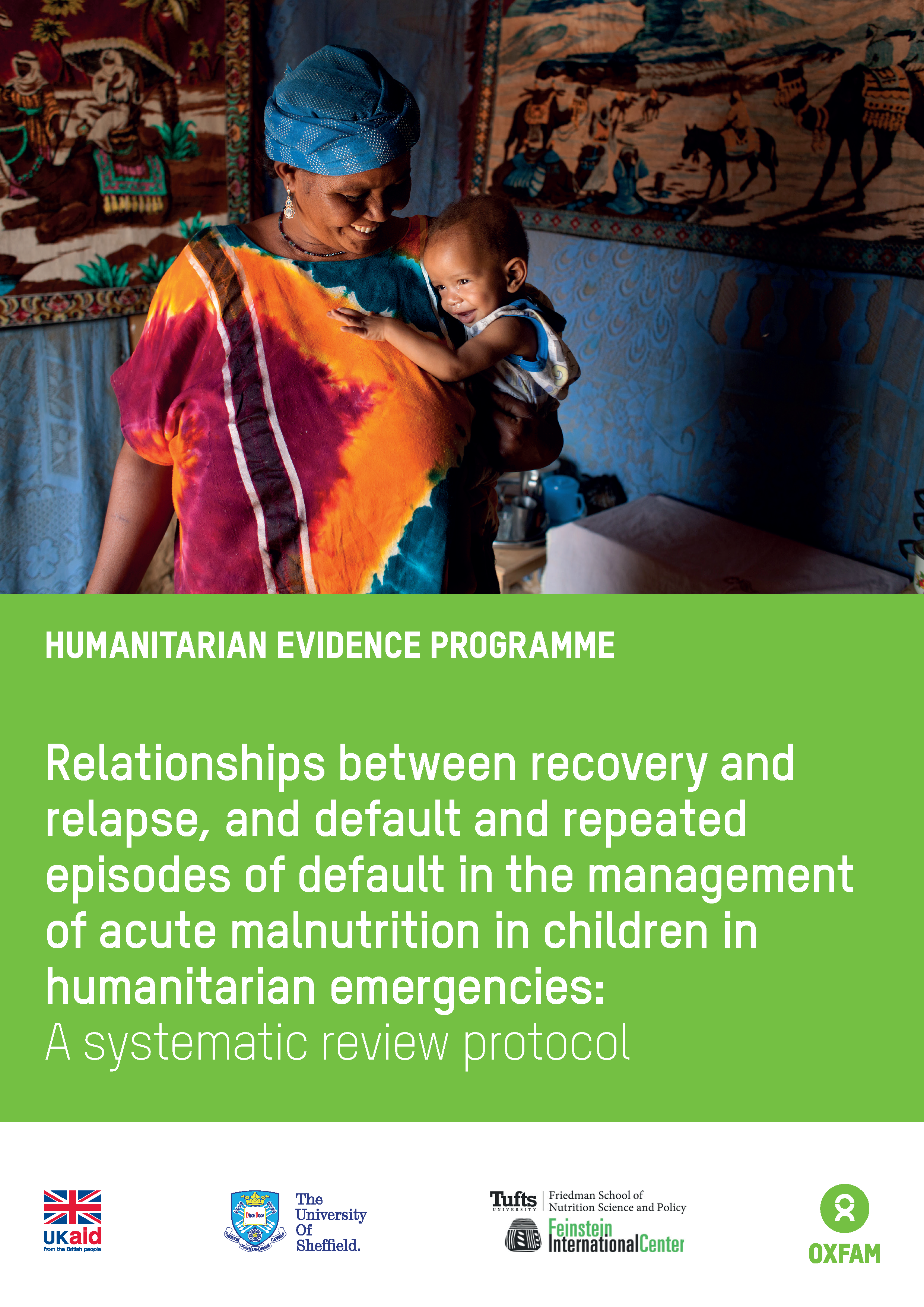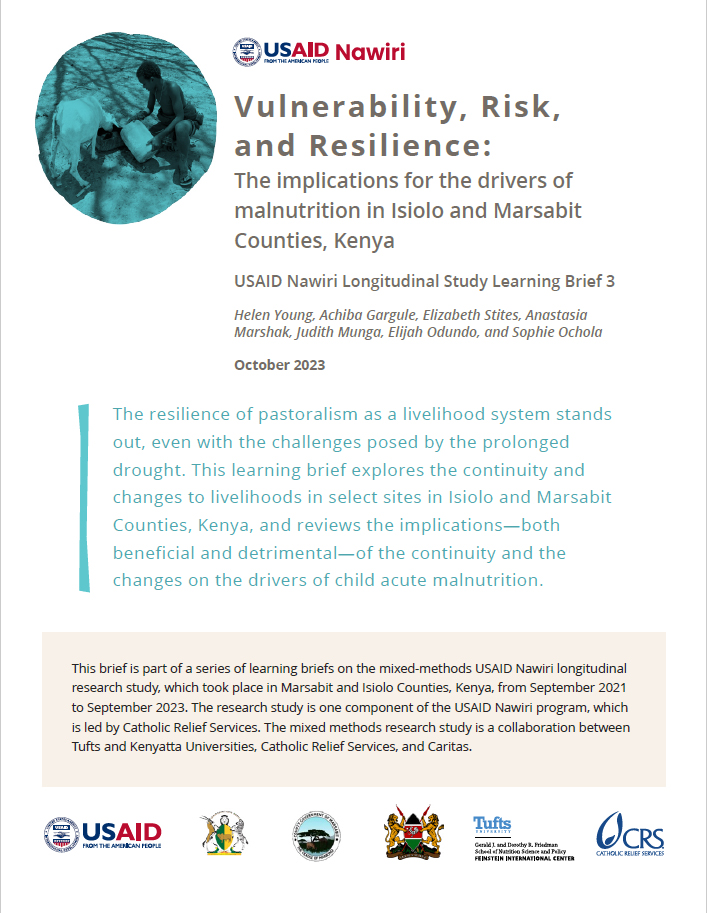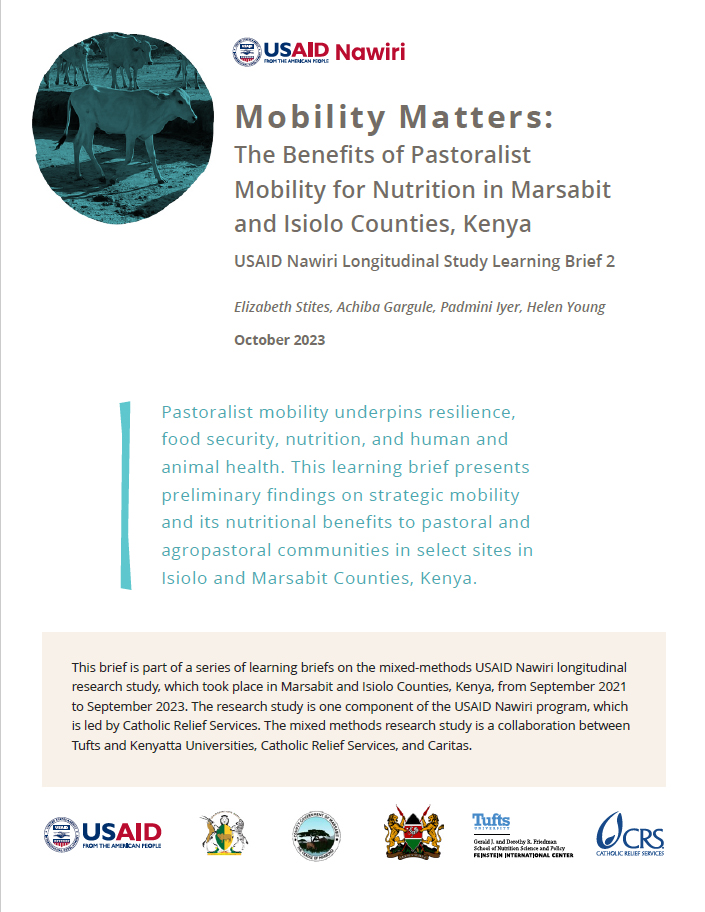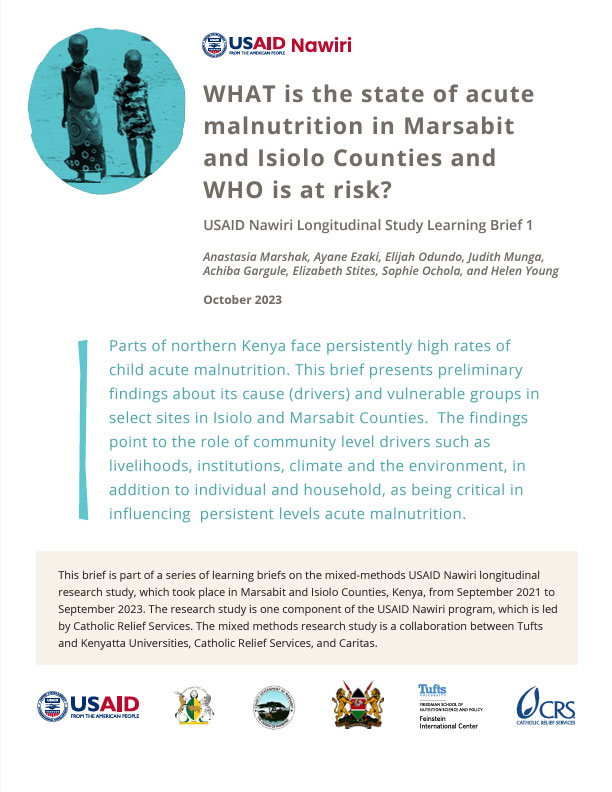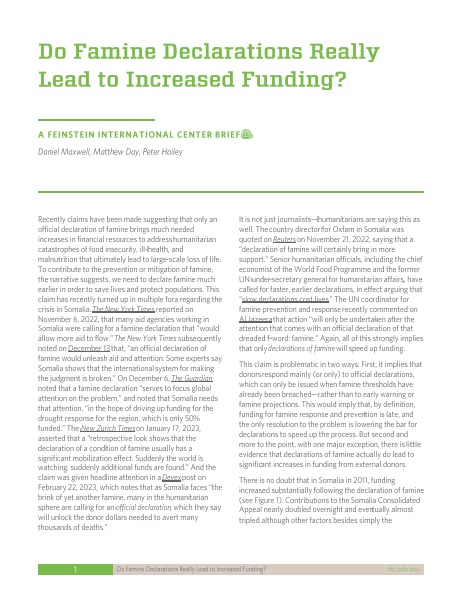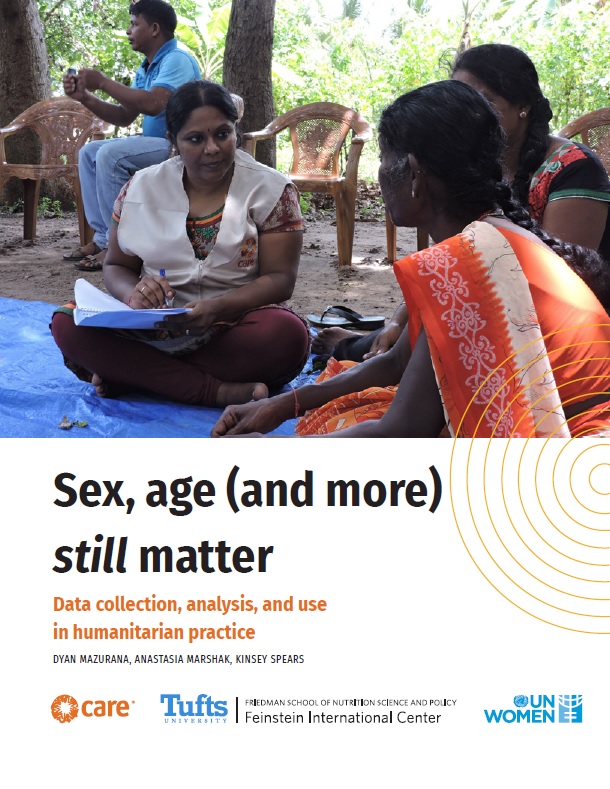This protocol details the methodology for an evidence synthesis on acute malnutrition in humanitarian crises. The evidence synthesis asks: “What is the evidence on the relationship between recovery and/or cure rates and relapse, and between relapse and default and/or return defaults/episodes of default in the management of acute malnutrition in children under five in humanitarian emergencies?”
Please check back in the summer and fall of 2016 for results of the full review of the evidence.
This protocol is part of the Humanitarian Evidence Program, a DFID-funded partnership between Oxfam and the Feinstein International Center.

